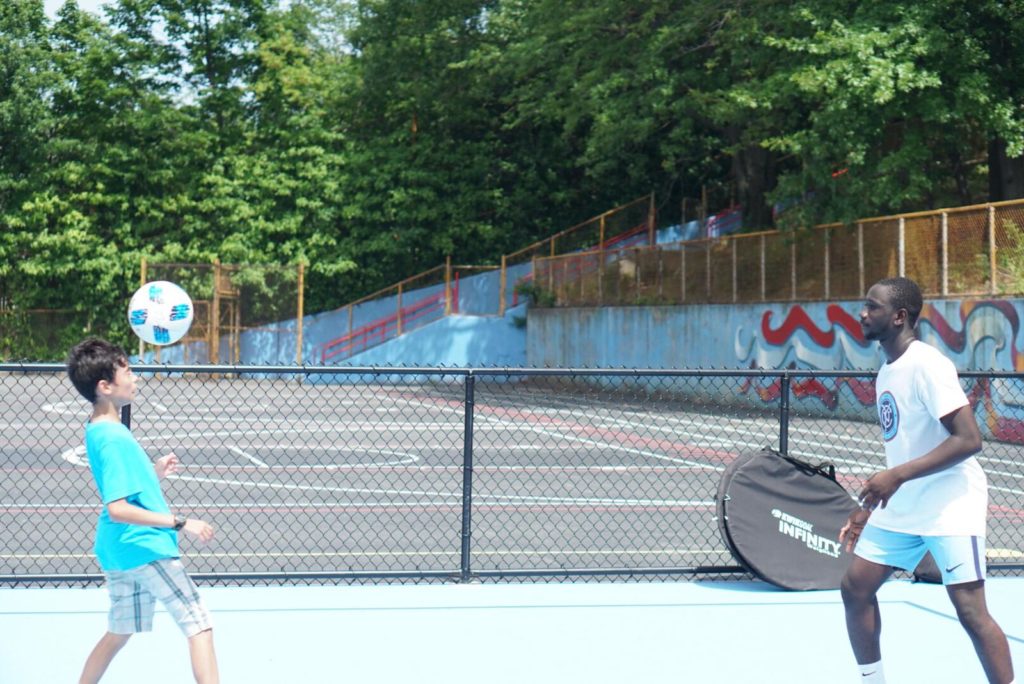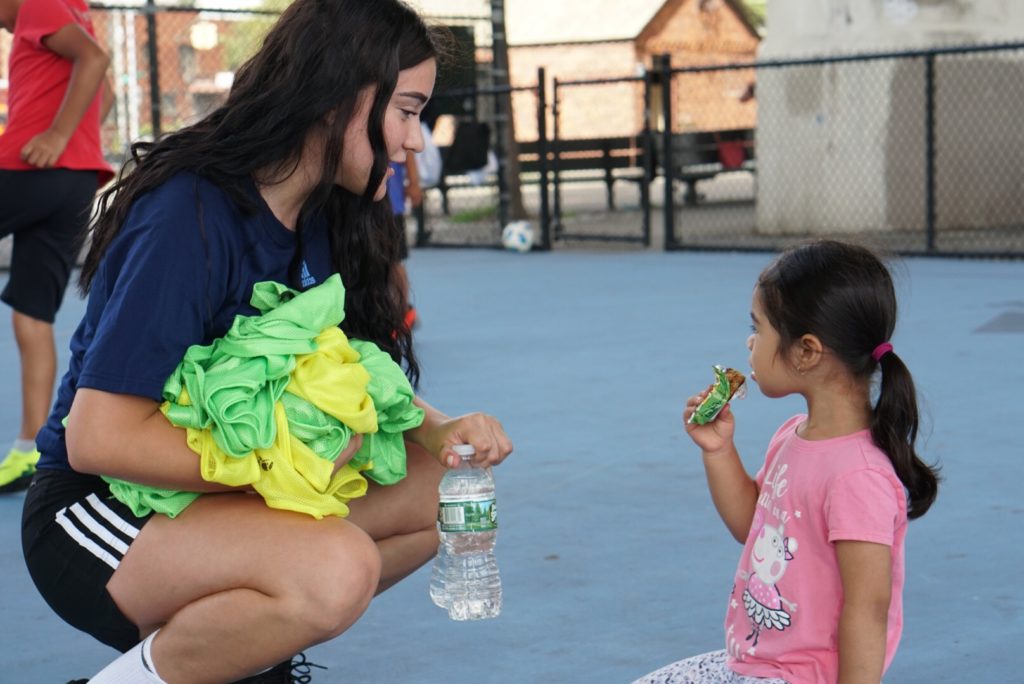Sports
Soccer for City Kids
By Ryan Marrus
Staff writer
Instead of continuing as a Wall Street stockbroker or an English teacher in Italy, Paul Jeffries, who’d played soccer as a kid in Britain, chose to work full-time in a youth soccer program in New York.
“What was the problem that I could help solve?” Jeffries asked himself as he was floating between different careers. He remembered that back home in Manchester, any kid who wanted to play soccer had the chance to do so. “I would say the happiest days in my life were kicking a ball around with my friends in the playground,” he said.
But in the United States, where he has spent most of his adult life, he noticed that many kids who are interested in sports must pay to play. That’s not fair, he said. “Every child should have the right to benefit from playing the game,” said Jeffries, 39, senior director of community development for the New York City Football Club, a pro soccer team. “Everywhere else in the world, it is a lot more inclusive, but here in the U.S., it is a little more exclusive.”

Ebrahim Konteh, a City in the Community youth leader, trains a young soccer player in Staten Island.
To lessen that exclusivity, the professional club launched City in the Community in December 2014, to help kids learn how to play soccer and gain self-discipline, confidence and capacity to thrive in school, things Jeffries gained from playing soccer.
Over the course of the program, students also learn health, education and leadership among youth. The organization’s website estimates that over 30,000 people have participated in the program.
Chelsea Quito, 19, of the Bronx, is one of them. For the last two summers, as a youth leader, she has coached at a City in the Community soccer field in Astoria, Queens, one of 50 fields that exist in or are planned for the five boroughs by 2022. Without the program, Quito said, “I would not know where I would be today. I would not have met the people who I am closest with. I would have different values and ambitions. I would have just focused on school and, now, be working at a job that didn’t suit me or allow me to pursue what I want in the future, which is work with non-profit organizations.”

In Astoria, youth leader Chelsea Quito works with one City in the Community’s youngest soccer players.
She coaches the younger kids enrolled in Soccer Bloc, a free, five-week-long summer program where they play the game and explore a range of issues, including physical and mental disabilities; choosing the right words to say; violence; healthy eating, hydration and sleep; and stress-management.
Also, City in the Community’s middle school and high school students participate in Saturday Night Lights, an initiative developed in partnership with the Manhattan District Attorney’s Office. Ebrahim Konteh, 21, now a youth leader for the organization, started Saturday Night Lights when he was attending a private school in the Bronx. “[It] helped get everyone off the streets, especially the kids from nine to eighteen years old,” he said, of the program. For kids living in some of the city’s poorest and most crime-ridden neighborhoods, the program is a safe haven.
“Saturday Night Lights has almost three-hundred kids,” he said. “When those kids are outside bad things can happen to them. However, when they are with us, they join our family and have fun, laugh, and learn.”
Jeffries is optimistic about City in the Community’s future. “Different platforms will change, and teams will come and go. But where it matters–that’s what people remember–[is] in the community.”

